Radio Ads
The truth was one of the most powerful and prolific weapons used in WWII. By distorting, suppressing, or releasing it, morale fluctuated and battles were won and lost. Radio was a primary vehicle for the dissemination of information, both true and false, and played a significant role in WWII.
Similarly, propaganda played its own major role in the war and in truth. Radio was used to propagate, but eventually employed the technique of propaganda through advertising. The images below, from the Library of American Broadcasting’s extensive collection, depict how radio ads tugged at the heartstrings of the public to help keep themselves in business, but also valued their commitment to the truth, which the enemy was so quick to try and destroy.
-
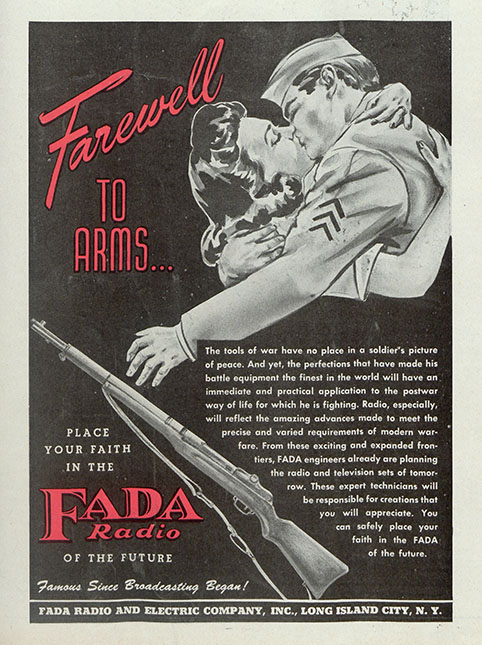
Place your faith in Fada Radio
Ads like this one from Fada, which extols the incredible technological advances the war has fostered, were one way of keeping the company name before the public. Some Ad Execs of the time felt such an approach risky, though. Was it really a good idea to remind a war worker about amazing things they can’t yet purchase when he or she can’t muster enough ration points for sugar in their morning coffee? Perhaps not, as Fada faded from the scene, going out of business only a few years after the end of WW II.
-
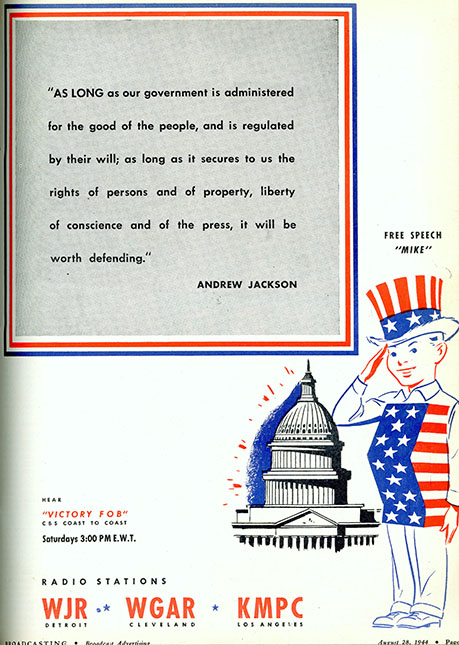
Free Speech "Mike"
Radio was seen as so vital to the war effort that many had feared a direct government takeover of the industry after Pearl Harbor. To the relief of many, this "takeover" did not occur. Yet radio stations and networks still felt it necessary to remind people that America’s system of free radio was an important difference between us and our enemies.
-
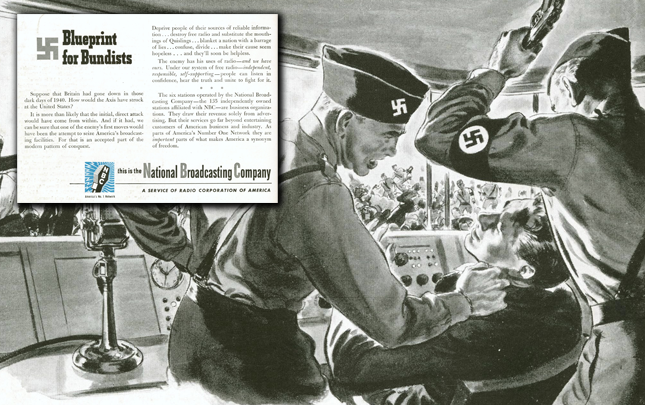
...independent, responsible, self-supporting...
"Blueprint for Bundists" further emphasizes the importance of the radio to the war effort and to freedom. Though the use of propaganda within the imagery is undeniable, the ad serves dual purposes, as it similarlry touches on the notion of the commission of free radio. “The enemy has his uses of the radio – and we have ours. Under our system of free radio – independent, responsible, self-supporting – people can listen in confidence, hear the truth and unite to fight for it.”
-
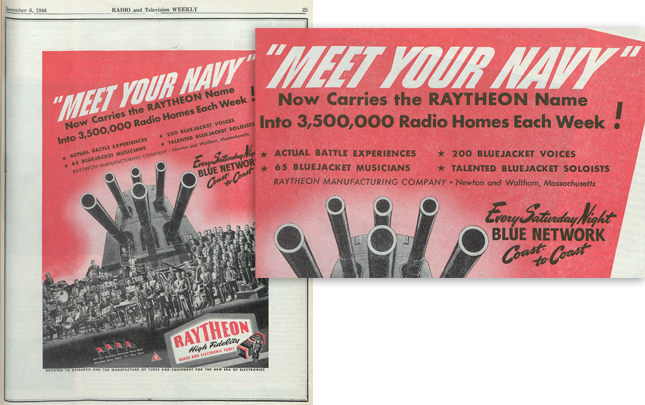
Meet Your Navy
Raytheon sponsored a patriotic radio program called "Meet Your Navy." The program brought talented members of the Navy into 3.5 M homes a week, and Raytheon picked up the bill. Giving airtime to the U.S. Navy proved to be a winning strategy and Raytheon went on to thrive in the post-war era. Though it still makes electronics for domestic applications, it has grown to be one of the largest defense contractors in the world, with 63,000 employees and revenue of $24 B.
-
The Columbia Broadcasting System
The CBS Program Book, printed quarterly by the Columbia Broadcasting System, provided the most current information available on the program schedule of the radio network for sponsors, advertising agencies, ratings companies, and network affiliates.
While clearly used for practical purposes, these covers offer another example of the radio’s employment of emotional appeal, but also as further representation of the importance of radio in communication, truth and morale to WWII efforts.
-
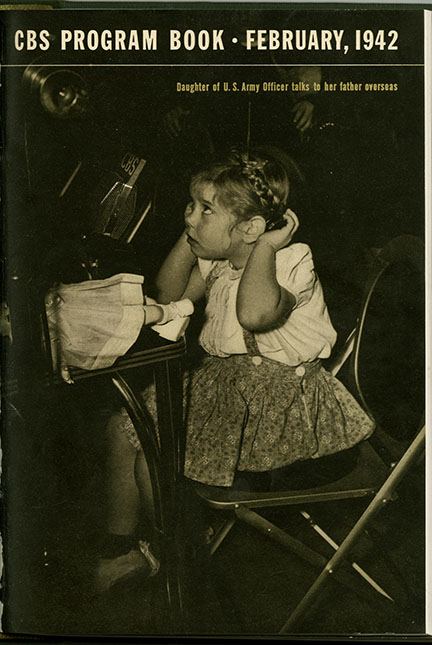
February 1942
A young girl speaks to her soldier father stationed overseas via the shortwave facilities of CBS.
-
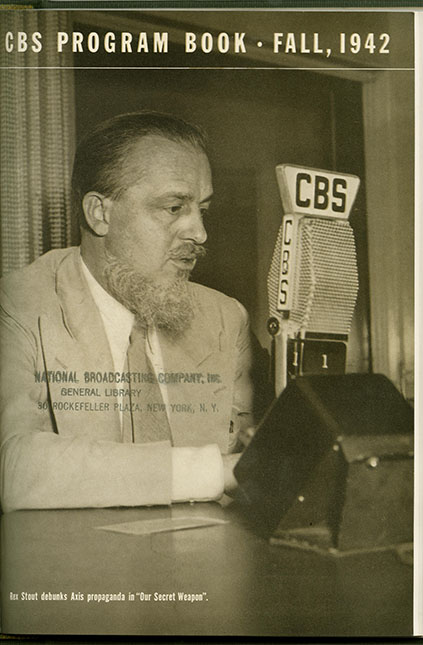
Fall 1942
Rex Stout speaks over the airwaves as chief debunker of Axis propaganda on the CBS program Our Secret Weapon. Stout systematically dismantled the worst of each week’s “news” from Germany and Japan by using the truth to combat lies from the enemy.
-
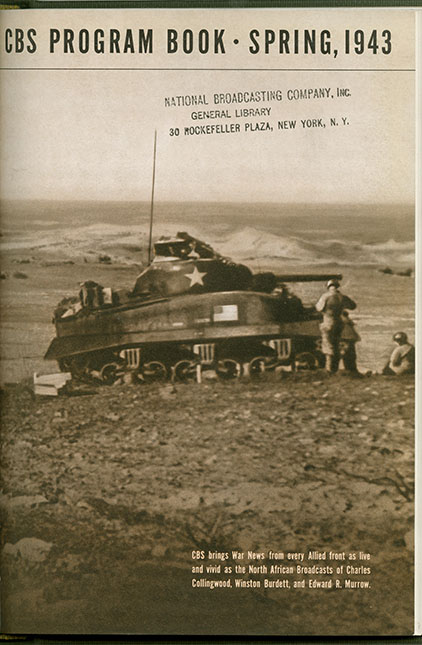
Spring 1943
People at home in the U.S. were able to find out what was going on in the war by listening to CBS Newsmen on the front lines of the North African Campaign.
-
